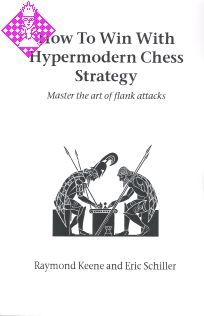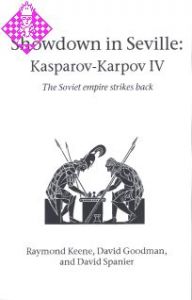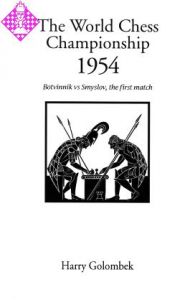Artikelnummer
LOKEEHTWWHCS
How To Win With Hypermodern Chess Strategy
189 Seiten, kartoniert, Hardinge, 2003, original erschienen 1994
Final vergriffen
In the 1920's the hypermodern school (primarily Nimzowitsch, Reti, Tartakower, Breyer and Grünfeld) introduced strategies which relied for their impact on fianchettoed bishops and a delayed assault on the centre. Perhaps the most provocative of the new openings was Alekhine's defence 1e4 Nf6 which positively encouraged a huge white pawn centre to lumber forwards and then self destruct. In their treatise the authors - between them responsible for 200 books on chess - outline and explain these theories and show how they remain valid as point scorers to the present day. Originally published as Winning with the Hypermodern.
Preface
Hypermodernism is a school of chess thought which has become firmly established as a principled approach to the game. Initially scorned by theoreticians, the success of its many practitioners has overcome the snobbish disapproval and brought full respectability to the openings which embody the idea that occupation of the centre is not without risk.
This book explores the history of the hypermodern movement and the legacy which remains prominent in contemporary chess. More than one hundred annotated games provide insights into the players, ideas, and openings of hypermodernism, with additional examples of the art provided to underscore the most important concepts.
We hope that the book can also prove helpful in a practical sense. We have concentrated on a restricted set of openings which make full use of hypermodern principles, and the games can also be studied with a goal of improving one's understanding of the opening. These are not full repertoires, of course. For that one must consult literature dedicated to opening theory. But studying these games will certainly enhance the ability to formulate appplans and understand the advantages and disadvantages of occupying the centre with pawns.
We have devoted each chapter to a combination of a leading hypermodern player and an opening favoured by that player. In some cases we have had to fudge a bit, since, for example, Breyer was not a leading exponent of any particular hypermodern opening.
A bibliography is supplied so that the reader can delve deeper into the Hypermodern School.
The majority of this book draws upon the analysis and scholarof Raymond Keene, who has been analysing the hypermodern ideas, and especially the games of Aron Nimzowitsch, for over two decades. Eric Schiller added many additional games and exthe commentaries, and also edited and organized the book. William Maddex contributed the material on Breyer and Suttles.
Preface
Hypermodernism is a school of chess thought which has become firmly established as a principled approach to the game. Initially scorned by theoreticians, the success of its many practitioners has overcome the snobbish disapproval and brought full respectability to the openings which embody the idea that occupation of the centre is not without risk.
This book explores the history of the hypermodern movement and the legacy which remains prominent in contemporary chess. More than one hundred annotated games provide insights into the players, ideas, and openings of hypermodernism, with additional examples of the art provided to underscore the most important concepts.
We hope that the book can also prove helpful in a practical sense. We have concentrated on a restricted set of openings which make full use of hypermodern principles, and the games can also be studied with a goal of improving one's understanding of the opening. These are not full repertoires, of course. For that one must consult literature dedicated to opening theory. But studying these games will certainly enhance the ability to formulate appplans and understand the advantages and disadvantages of occupying the centre with pawns.
We have devoted each chapter to a combination of a leading hypermodern player and an opening favoured by that player. In some cases we have had to fudge a bit, since, for example, Breyer was not a leading exponent of any particular hypermodern opening.
A bibliography is supplied so that the reader can delve deeper into the Hypermodern School.
The majority of this book draws upon the analysis and scholarof Raymond Keene, who has been analysing the hypermodern ideas, and especially the games of Aron Nimzowitsch, for over two decades. Eric Schiller added many additional games and exthe commentaries, and also edited and organized the book. William Maddex contributed the material on Breyer and Suttles.
| EAN | 1843821052 |
|---|---|
| Gewicht | 250 g |
| Hersteller | Hardinge |
| Breite | 13,7 cm |
| Höhe | 21,5 cm |
| Medium | Buch |
| Erscheinungsjahr | 2003 |
| Autor | Raymond KeeneEric Schiller |
| Sprache | Englisch |
| ISBN-10 | 1843821052 |
| Jahr der Originalausgabe | 1994 |
| Seiten | 189 |
| Einband | kartoniert |
| Name | Hardinge Simpole Publishers |
|---|
006 Preface
007 Introduction
022 Staunton - Grandfather of Hypermodernism (English Opening)
047 Reti and the Hypermodern Revolution in the 1920s (Réti Opening)
069 Nimzowitsch - the Philosopher of Hypermodernism (Nimzo-Indian)
090 Breyer - Seeker of Truth (Budapest Defence)
101 Ernst Grünfeld (Grünfeld Defence)
112 Alekhine as Hypermodernist (Alekhine Defence)
122 Bogoljubow - Theoretician (Queen's Indian Defence)
127 Tartakower - the Gadfly of Hypermodernism (Other Indian Defences)
133 Bronstein - Improviser (King's Indian Defence)
148 Larsen - the Counterpuncher (Larsen Attack)
155 Suttles - carrying things to extremes! (Pirc and Modern Defences)
161 Other Modern Flank Openings
165 Hypermodern Sicilians
172 Nimzowitsch's Other Defence
183 Conclusion
185 Bibliography
187 Index of Complete Games
007 Introduction
022 Staunton - Grandfather of Hypermodernism (English Opening)
047 Reti and the Hypermodern Revolution in the 1920s (Réti Opening)
069 Nimzowitsch - the Philosopher of Hypermodernism (Nimzo-Indian)
090 Breyer - Seeker of Truth (Budapest Defence)
101 Ernst Grünfeld (Grünfeld Defence)
112 Alekhine as Hypermodernist (Alekhine Defence)
122 Bogoljubow - Theoretician (Queen's Indian Defence)
127 Tartakower - the Gadfly of Hypermodernism (Other Indian Defences)
133 Bronstein - Improviser (King's Indian Defence)
148 Larsen - the Counterpuncher (Larsen Attack)
155 Suttles - carrying things to extremes! (Pirc and Modern Defences)
161 Other Modern Flank Openings
165 Hypermodern Sicilians
172 Nimzowitsch's Other Defence
183 Conclusion
185 Bibliography
187 Index of Complete Games
Mehr von Hardinge
-
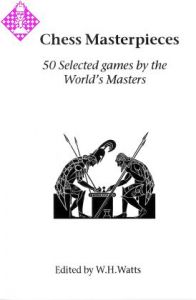 Chess Masterpieces16,50 €
Chess Masterpieces16,50 € -
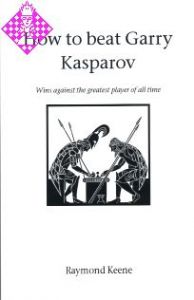 How to beat Gary Kasparov18,95 €
How to beat Gary Kasparov18,95 € -
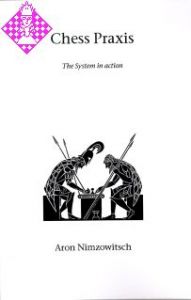 Chess Praxis33,50 €
Chess Praxis33,50 € -
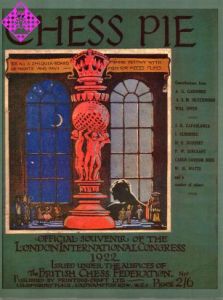 Chess Pie24,50 €
Chess Pie24,50 € - Mehr von Hardinge

